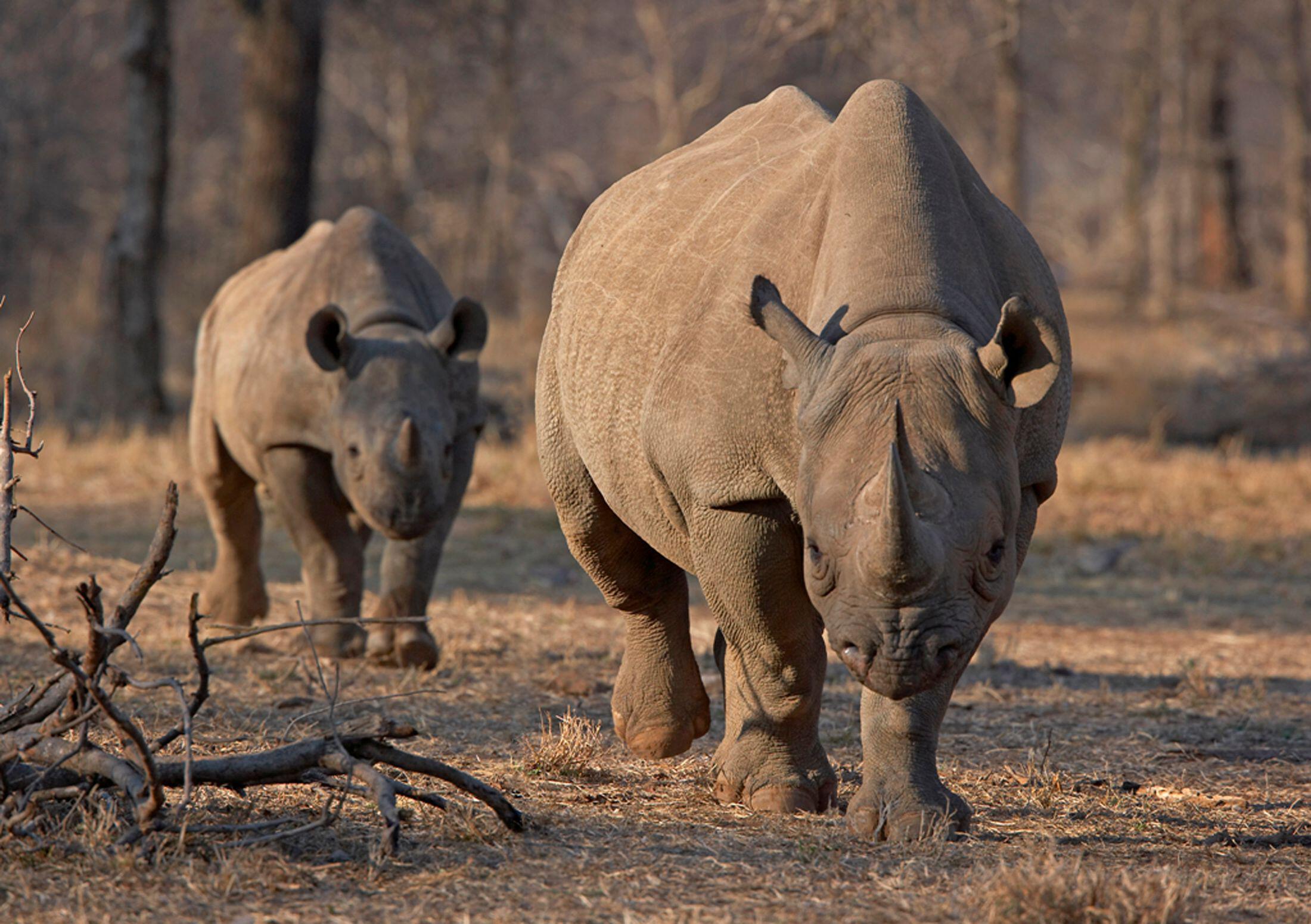On 23 March, the International Bank for Reconstruction and Development (IBRD), an arm of the World Bank, announced a five-year US$150-million bond dedicated to protecting black rhinos in South Africa.
The Rhino Bond, more formally called the Wildlife Conservation Bond, is the world’s first financial instrument dedicated to protecting a species. Its innovative blended finance approach has the potential to close the multi-billion-dollar biodiversity financing gap.
As for China, replicating and scaling up the Rhino Bond model could accelerate its own as well as global action for biodiversity protection and restoration this decade.
Shortfall for biodiversity financing remains large
To reverse the steep decline of nature by 2030, the world needs to mobilise between US$722 and $967 billion into biodiversity conservation each year, according to a joint report by the Paulson Institute, Nature Conservancy, and Cornell Atkinson Center for Sustainability.
However, current biodiversity financing is highly insufficient. The situation has been made worse by the pandemic hitting tourism revenue and causing cuts in government spending and private funding. This has left most countries, developing ones in particular, with a massive biodiversity financing gap.
5,366 to 5,630
black rhinos are left in the wild in Africa, according to the International Rhino Foundation
The draft version of “the post-2020 global biodiversity framework”, which was unveiled in Kunming last October during the first phase of the Convention on Biological Diversity’s COP15 conference, includes a target on enlarging financing. Target 19 calls on parties to “increase financial resources from all sources to at least US$200 billion per year… increasing by at least US$10 billion per year international financial flows to developing countries, leveraging private finance, and increasing domestic resource mobilisation…”
The framework awaits to be successfully adopted during the second phase of COP15 later this year. Meanwhile, host country China has pledged an initial 1.5 billion yuan (US$224 million) in a Kunming Biodiversity Fund (KBF) to support biodiversity protection in developing countries, inviting other countries to contribute too.
There hasn’t been clarity on how the fund is going to be used, but the novel financing model pioneered by the Rhino Bond could provide a template for using it and other public financial resources to leverage more private capital to fill the global biodiversity financing gap.
Catalysing private financing
By financing conservation activities, the Rhino Bond aims to preserve black rhinos in two protected areas in South Africa – the Addo Elephant National Park and the Great Fish River Nature Reserve. IBRD chose the rhino because it is an umbrella species, on which many other species depend. Black rhinos play an essential role in shaping South Africa’s ecosystems and they are critically endangered, with only 5,366 to 5,630 left in the wild in Africa, according to the International Rhino Foundation.
The $150-million Rhino Bond is structured on a pay-for-success model. Proceeds from the bond will be channelled to finance the World Bank’s sustainable development projects and programmes globally, and to creating conservation-related jobs in South Africa. Coupon payments over the five years will go to the two rhino parks rather than to investors.
After five years of maturity, in addition to the principal redemption, investors will receive a contingent “success payment” from the IBRD with funds provided by a performance-based grant from the Global Environment Facility. The GEF is one of the largest multilateral funds for the environment, and has successfully mobilised over US$100 billion. The conservation success payment, capped at $13.76 million, is determined based on the black rhino population growth rate over the terms of the bond. That will be measured and verified by independent third parties; management consultancy Conservation Alpha will calculate the black rhino growth rate and the Zoological Society of London will verify the results.
The Rhino Bond is an innovative way of mobilising private finance into the biodiversity protection field, 75–85% of which currently relies on domestic public expenditure, according to global mapping done by the OECD.
Three characteristics enable the model’s catalysing effect towards private capital.
First, it lowers risk by leveraging the strong credit rating of a multilateral development bank. Investors are almost guaranteed to redeem their principal, which is independent of the conservation outcome.
Second, and different from some revenue-backed green bonds, the model brings in donor funds to compensate for the lack of steady streams of cash from conservation projects. The performance-based grant from the Global Environment Facility further incentivises capital market participants to pool capital into the biodiversity space.
Third, the model aligns investor interest with sustainability targets closely, contrary to the mechanism of the “coupon-step-up” sustainability-linked bonds. SLB issuers are contracted to pay investors higher coupon rates as a punishment if they fail to meet their sustainability goals. In other words, investors’ short-term financial gains are at the cost of issuers’ missed sustainability goals. The Rhino Bond model solves this paradox by aligning investor interest with a wildlife preservation goal. Coupled with the low risk arrangement, the pay-for-success mechanism encourages potential investors to get attuned to biodiversity conservation through gradually increasing their financing portfolios.
In order to close the biodiversity financing gap, it is vital to explore such innovative financial models, rather than rely too heavily on traditional conservation funding sources.
Implications for China’s biodiversity ambition
China has not yet experimented with the Rhino Bond model. However, it has been a leading figure in green bond issuances in both domestic and overseas markets, totalling an impressive US$1.6 trillion by the end of 2021, according to the Climate Bonds Green Bond Database. Biodiversity-themed bonds, although small in amount compared to other types, are also starting to gain traction in China. For example, in September 2021 Bank of China raised the equivalent of US$580 million from a two-year biodiversity-themed green bond, devoted to terrestrial and aquatic biodiversity conservation and sustainable land-use projects across China.
Indeed, China enjoys a booming green bond market met with growing investor enthusiasm. In order to scale up its conservation efforts both domestically and across the globe, it is viable for China to match its increased biodiversity ambitions with the ever-maturing green bond market.
Specifically, China could explore innovative instruments like the Rhino Bond model, harnessing the power of multilateral funds such as the Global Environment Facility and the Kunming Biodiversity Fund to provide performance-based grants.
This year also sees China assuming the chair of the 14th BRICS summit. As a lead-up to the main event, the 8th BRICS Environment Ministers’ Meeting was held virtually on 5 May. In the meeting, biodiversity protection was once again a centrepiece of the shared sustainable vision for the five countries. The BRICS-founded New Development Bank, a multilateral development bank with a strong credit rating, can also issue such bonds. This could even be denominated in yuan and launched in China’s onshore market, so that the proceeds can be easily channelled to conservation projects in China. The capital flows generated can also be directed to fund overseas biodiversity-related activities.
Through these de-risking measures, the private sector can be further incentivised to enter the biodiversity field, to help turn the post-2020 vision into reality over the next decade.








